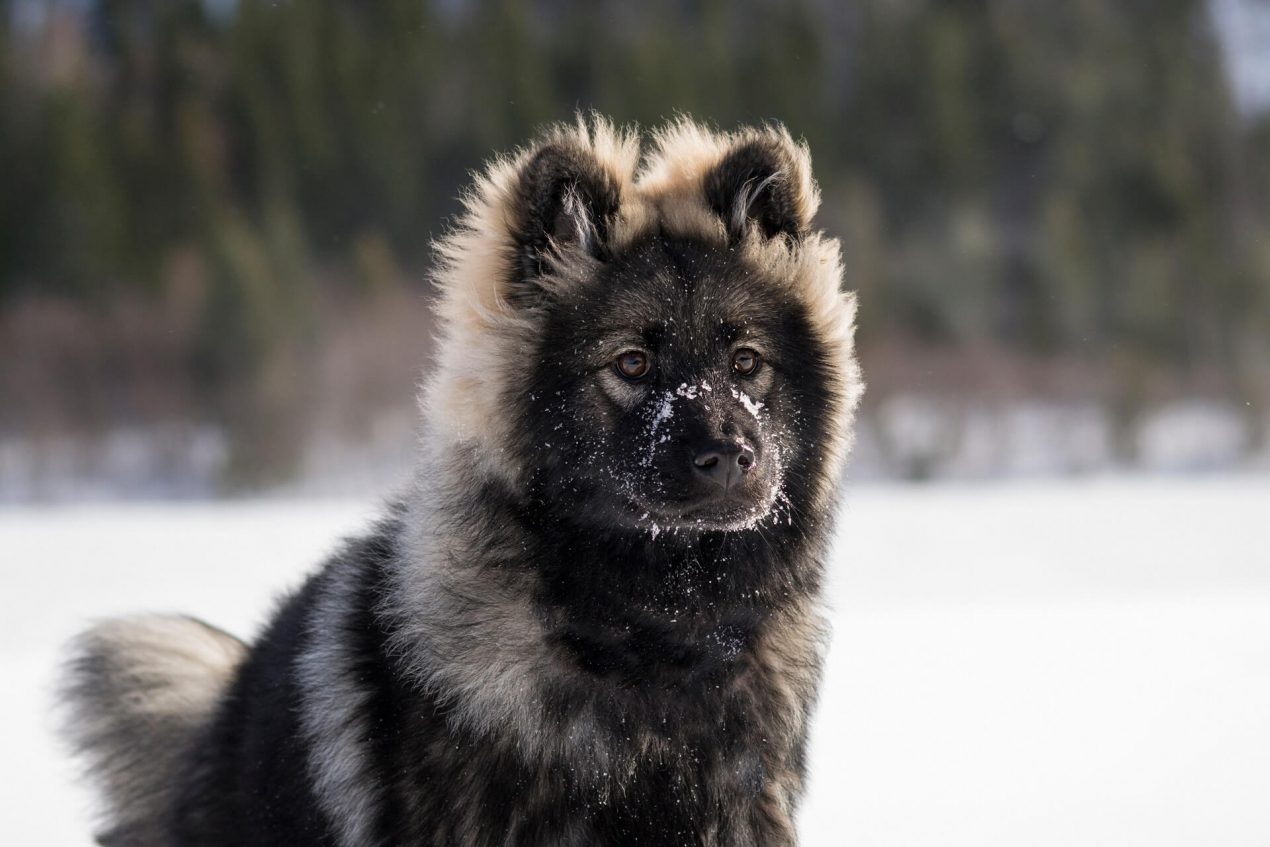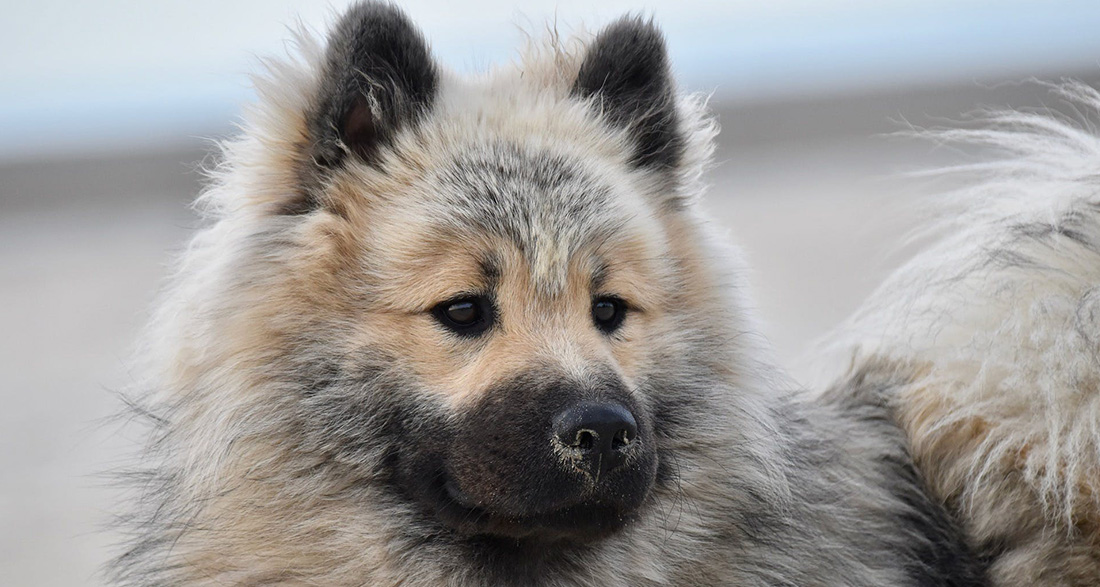The Eurasier is a relatively recent dog breed and an excellent family companion. This athletic and affectionate partner for daily life, however, has its own mind. Below, you will find all the essential information about this “young” dog breed.
History of the Eurasier
The Eurasier does not have a long history to look back on. The foundation of the Eurasier breed was laid in the 1960s. The “father” of the Eurasier is Julius Wipfel, a dog lover from Weinheim an der Bergstraße. The primary idea was to create a friendly and uncomplicated Nordic type as a family dog. Charlotte Baldamus also supported this endeavor, drawing inspiration from the reports of Prof. Dr. Konrad Lorenz.
Which breeds are in the Eurasier?
The basis was the mating of Keeshond and Chow Chow. Subsequently, this basic type was perfected by incorporating Samoyeds in the 1970s. This combination of three breeds was successful, resulting in a practical and modern sled dog. The Eurasier embodies the wild and primal with a family-friendly character. In 1973, this new breed was recognized by the FCI as the Eurasier, with the standard number 291 in Group 5 – Spitz and Primitive Types, Section 5 – Asian Spitz and Related Breeds. Additionally, there are various associations within the United States that oversee responsible breeding, with three within the AKC and five outside the AKC.
The origin of this dog breed dates back to the 1960s.
Breed Overview
GROUP: Non-Sporting
HEIGHT: 19 to 24 inches tall at the shoulder
WEIGHT: 40 to 70 pounds
TEMPERAMENT: Reserved, alert, calm, watchful, even-tempered, intelligent
COAT: The double coat consists of a medium-long, straight, loosely lying outer coat and a thick undercoat. The hair is shorter on the face, ears, and fronts of the legs and longer on the tail, backs of the legs, and neck
COAT COLOR: Any color or combination of colors except pure white and piebald
HYPOALLERGENIC: No
LIFE SPAN: 14 years
Appearance of the Eurasier
The Eurasier is considered a medium-sized dog. The Eurasier size ranges from 48 to 60 cm, depending on gender, with a body weight fluctuating between 18 and 32 kg. The compact body of the dog is covered with semi-long guard hair. Additionally, the dense undercoat gives it the appearance of a fluffy teddy bear. The fur is shorter on the face, erect ears, and the front of the legs. In contrast, the fur on the tail, the back of the front and hind legs is longer, described as flags on the front legs and trousers on the hind legs. The tail is carried in a curved manner, either on the back or to the side. The colors of the coat are diverse, with only white, white-spotted, and liver colors not being desirable for Eurasiers.
Nature and Character
The Eurasier’s character is primarily balanced. Despite its confident nature, it is calm and composed, especially evident in its interactions with other dogs. Is the Eurasier aggressive? Aggressive behavior is foreign to them, and their threshold for irritation is high. This intelligent dog is trainable and very affectionate towards its people. It is particularly vigilant and attentive, making it suitable as a guard dog. Towards strangers, it is reserved and confident. Despite its calm demeanor, it is not dull and can be lively when needed.
| Affection Level | Medium |
| Friendliness | Medium |
| Kid-Friendly | High |
| Pet-Friendly | High |
| Exercise Needs | Medium |
| Playfulness | Medium |
| Energy Level | Medium |
| Trainability | High |
| Intelligence | High |
| Tendency to Bark | Low |
| Amount of Shedding | Low |

Acquiring a Eurasier
Acquiring a Eurasier means welcoming a new family member. Throughout its life, this sensitive breed wants to share everything with you. You cannot simply park this breed somewhere. Do your private and professional requirements meet the needs of this dog? The Eurasier is an ideal family dog, flourishing in such an environment and being a resilient playmate for children. Due to its adaptable nature, it is suitable for single adults of any age. Importantly, it can live in harmony with its human family. Of course, it can be left alone in the house or apartment for a few hours without redecorating the space.
What should I consider when buying?
You should buy a Eurasier puppy from a reputable breeder. The AKC can assist you with this. A trustworthy breeder provides comprehensive information and shows you the entire litter along with the mother. During a visit, you get to know the environment and living conditions. The price of a Eurasier ranges between $1300 and $2000. This is not related to the quality of breeding but depends on the federal state. Eurasiers in shelters are rarely found.
Does the Eurasier get along with other animals?
Indeed, Eurasiers generally get along with most animals. However, they have a strong hunting instinct, so caution should be exercised with small pets. It is also essential to socialize the dog well.
Development and Training of the Puppy:
You lay the groundwork for smooth coexistence during the puppy’s age. Be consistent in your training measures, as Eurasiers may question the purpose of some actions. Motivate and provide variety. Positive reinforcement is another tool; the bond between you and the puppy will deepen quickly, and the puppy or young dog will want to please you. While mistakes are forgiven, a “harsh” and “unfair” hand is never forgotten. Assistance in training can be found in numerous dog schools near you. With proper training, the Eurasier is suitable even for beginners.
How do I keep a Eurasier?
You can keep the Eurasier in both urban and rural settings. It is not prone to excessive barking, making it well-suited for city living. Of course, it would prefer to live in a house with a garden, but the essential factor is living with its human family. You can take this breed with you in everyday life, whether going to a restaurant or on vacation. This sensitive breed is unhappy when separated from its beloved human due to travel plans. It does not understand the separation.
How much exercise does a Eurasier need?
Eurasiers have a lot of energy, so they need ample exercise. Without sufficient movement, they become unhappy. Therefore, you should spend at least half an hour actively engaging with the dog daily.
Activities with the Eurasier
The Eurasier is not just a sports dog. Long walks with its people are sufficient. You should be out for at least an hour per walking session. They also enjoy cycling and jogging. Many Eurasiers love to swim as well. If you insist on engaging in a dog sport, choose a discipline that you can do together, such as agility and obedience.

Health and Care
The grooming effort is moderate, with the main focus on Eurasier coat care. You should brush them regularly (several times a week) to avoid matting, especially during the shedding season. Nonetheless, you will find dog hair throughout the house, which is a drawback of long-haired breeds. Checking the claws and pads after prolonged activities is essential.
Genetic Diseases
Generally, this breed is robust and not prone to illness. Eurasier breeding ensures that no genetic diseases occur. However, when acquiring, you should be aware of some diseases, including elbow and hip dysplasia, as well as heart problems. Therefore, it is crucial to get the puppy from a reputable breeder who has conducted health examinations on the parent animals and can show you the results.
Interesting and Noteworthy
A distinctive feature of Eurasiers is the coloration of the tongue. It varies between blue, blue-spotted, and flesh-colored. This “trademark” is unique to this breed. The average lifespan of Eurasiers is around 12 years. With proper care, this dog breed can reach 14 years or more. They remain fit into their senior years. The hunting instinct is usually not highly developed. This hereditary trait from their ancestors is easily manageable.
Do you have a Eurasier or are you considering getting one? Share with me in the comments what you think makes them special!


